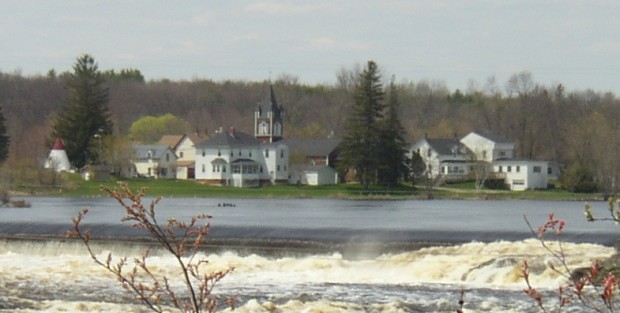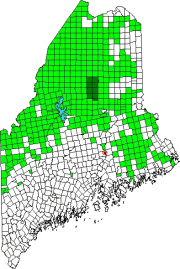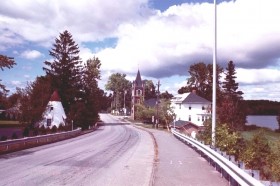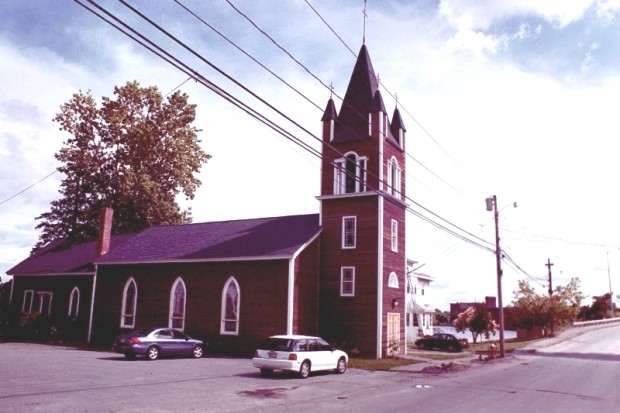| Year | Population |
|---|---|
| 1970 | 317 |
| 1980 | 458 |
| 1990 | 476 |
| 2000 | 562 |
| 2010 | 610 |
| Geographic Data | |
|---|---|
| N. Latitude | 45:12:00 |
| W. Longitude | 68:37:11 |
| Maine House | District 122 |
| Maine Senate | District 5 |
| Congress | District 2 |
| Area sq. mi. | (total) 20.6 |
| Area sq. mi. | (land) 7.8 |
| Population/sq.mi. | (land) 78.2 |
County: Penobscot
Total=land+water; Land=land only |
|
The Reservation in Penobscot County, is the home of the Penobscot Tribe of Maine’s Native American population, and is located on Indian Island in the Penobscot River and within the boundaries of the community of Old Town.
It is the birthplace in 1871 of Cleveland Indians baseball player Louis Sockalexis. Dancer and entertainer Molly Spotted Elk was born here in 1903.
The 1900 U.S. Census reported 269 residents and 320 in 1910. Over the past thirty years, the population has grown consistently. Frank T. Siebert, Jr. worked to research the Penobscot language in the late 20th century.
The Penobscot Nation Council, headquartered on the Island, is composed of elected members, lead by a Chief and a Vice Chief.
The first bridge to the Island, with just one lane, was installed in 1950, having been moved there from Howland when that community received a modern bridge.
Earlier, a ferry to Old Town had cost tribal members two cents and visitors five cents. In winter, people would walk on the ice over a sawdust trail. The current bridge was completed in 1986.
As of a 2007 census, the enrolled population of the Penobscot Nation was 2,278, including those living outside Indian Island. The Tribal land included the 4,866 acre reservation, 90,566 acres held in trust and 27,636 acres purchased and owned by the Penobscots.
The U.S. Environmental Protection in 2007 produced a concise summary of the River’s role in Penobscot history and culture:
All the land in the Penobscot River Valley once belonged to the Penobscot people, from the Canadian border to the coast, where they would gather en masse in the summer for socializing and sea food. The Penobscot River is of great importance to Penobscot people and has been the center of the tribe’s existence for thousands of years. The tribe used and continues to use the lands and waters for hunting, fishing, trapping, gathering, transportation (boating), and ceremonial purposes.
The majority of the land is covered with timber of high quality. As settlers came into the territory, the tribal holdings were reduced. Later, the lumber industry took hold and tribal lands were further reduced to meet industrial needs. The river and its traditional uses by tribal members became threatened by dams and pollution. The Penobscot people became crafts oriented, making birch bark canoes, fancy baskets, snowshoes, moccasins and the like, while natural resources such as moose, beaver and caribou were dying out, and threatening tribal sustenance lifeways.
Today the tribe continues to carry out many of its traditional cultural practices while trying to restore others in the face of the numerous threats to its land and waters.
Additional resources
Kennedy, Kate. Florence Nicolar Shay: Penobscot Basketmaker and Tribal Advocate. Old Town, Me. Charles Norman Shay. 2006. (Includes a brief history of the Penobscot Indians)
MacDougall, Pauleena. Indian Island, Maine: 1780 to 1930. Orono, Me.. 1995. (Thesis (Ph.D.) in History–University of Maine, 1995.) [University of Maine, Raymond H. Fogler Library, Special Collections; Maine State Library]
Maine. Forestry Department. Forestry Department Indian Records, 1929-1933. (Cataloger Note: These records include misc. petitions on various topics, report on typhoid at Indian Island, correspondence regarding Indian schools, petitions for a new Penobscot Agent, lumbering in Indian Township and sale of lots in Indian Township (1890-1918).
Penobscot Nation Land Committee. Penobscot Nation Comprehensive Land Use Plan and Ordinance, working draft. Indian Island, Me. The Committee. 1991. [University of Maine, Raymond H. Fogler Library, Special Collections; Maine State Library; Maine State Law and Legislative Reference Library]
U.S. Environmental Protection Agency. “Penobscot Indian Nation.” Fact Sheet. (September,2007) http://www.epa.gov/region1/govt/tribes/penobscotindiannation.html (accessed February 15, 2012)
National Register of Historic Places – Listings
St. Anne’s Church and Mission Site
[on Indian Island Maine Route 43] off St. Anne’s mission was established in 1688. By 1700 a church had been built on the site of the present church. The mission was established by Father Louis Pierre Thury who was ordained in Quebec in 1667. In 1705 the mission to the Penobscot tribe was transferred to the Jesuits and Father Antoine Gaulen from 1705 to 1732. From then to 1792 no priest was at Indian Island except for the occasional missionary on route from Quebec to Nova Scotia or New Brunswick.
From 1792 to 1818, several missionaries ministered to the Indians during the summer months and spent the winters with the Kavanaughs at Damariscotta Mills in Newcastle. This was the earliest Irish Catholic settlement in Maine. It was during the visits of John Cheveus that the second church was built occupying the site of the first.
In the late 1820’s and early 1830s Father Virgil Barber was the resident priest. During his pastorate the third and present church was built on the site of the first two St. Anne’s. The church was finished in 1830 with funds granted by the Maine State Legislature. In 1848, when Father John Bapst arrived the church was “a rather good looking building with a steeple and bell and a choir gallery.” He only ministered to the Indians for a few years until he went to minister to Catholics in Bangor and Ellsworth. From about 1855 to 1926, St. Anne’s used the resident priests at the parishes in Old Town. In 1926, it became a parish with its own full time priest.
The history of the French missions to Maine Indians revolves around the church, one of the oldest Catholic churches in New England. The building itself is also one of the oldest Catholic churches still standing in New England. The oldest Catholic burying ground in New England, established in 1688, is at Indian Island.








My dad and I are wondering if you had places for tourist to stay at a Indian Reservation. We have always wanted to go to one but not sure how to get ahold of people that know. My dad has alzimers and wishes he could go to one before he cant remember any more.Would love to hear from someone that can help..